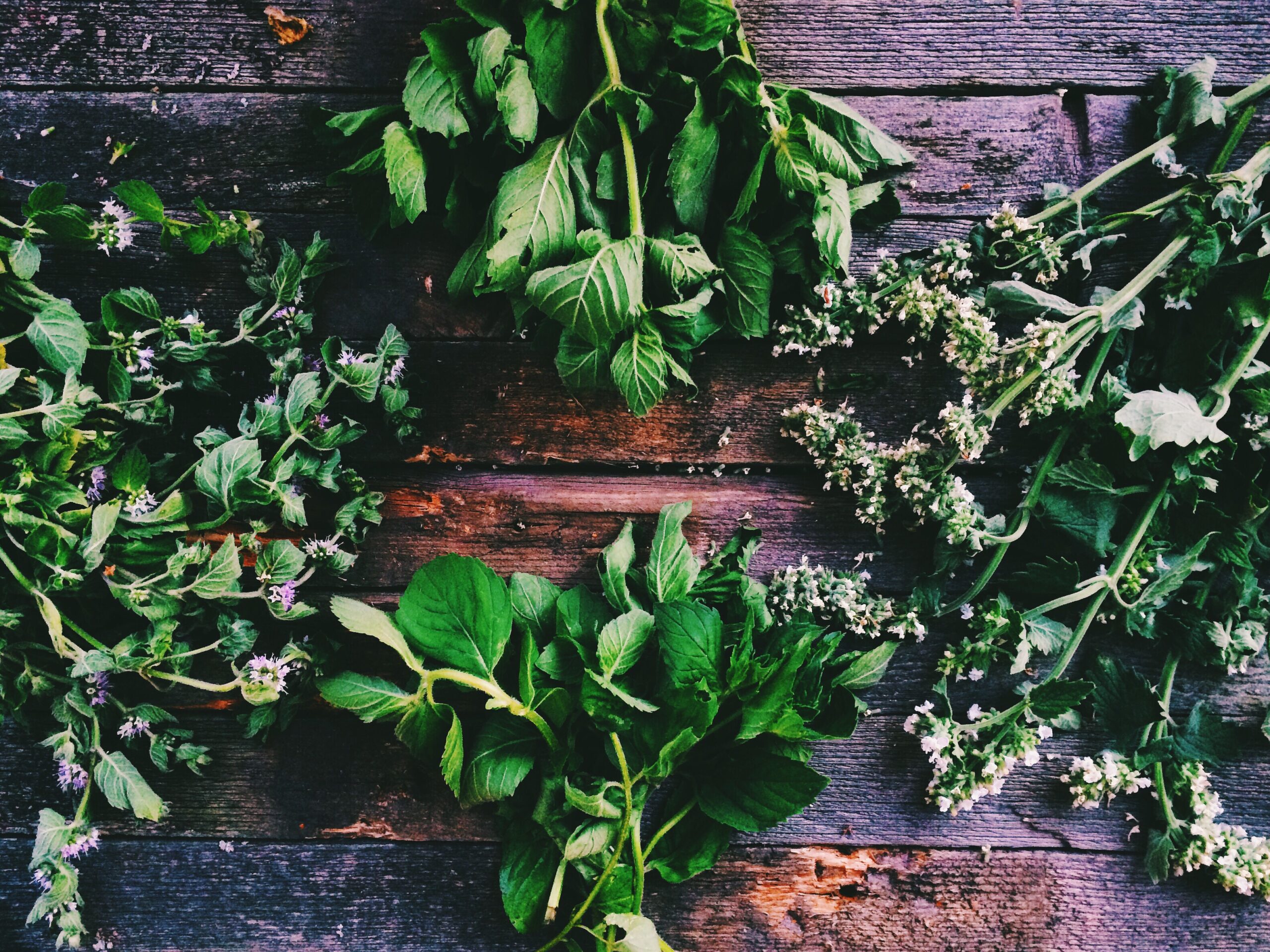
Cold and flu are seasonal ailments, often peaking during the colder fall and winter months. If you get infected, the recovery often rests on at-home care measures to ease the symptoms and make you more comfortable as your body fights off the infection. Some common herbs have powerful medicinal properties that can help alleviate symptoms.
This guide describes 8 herbs that can help improve cold and flu symptoms, with ideas on how to use them.
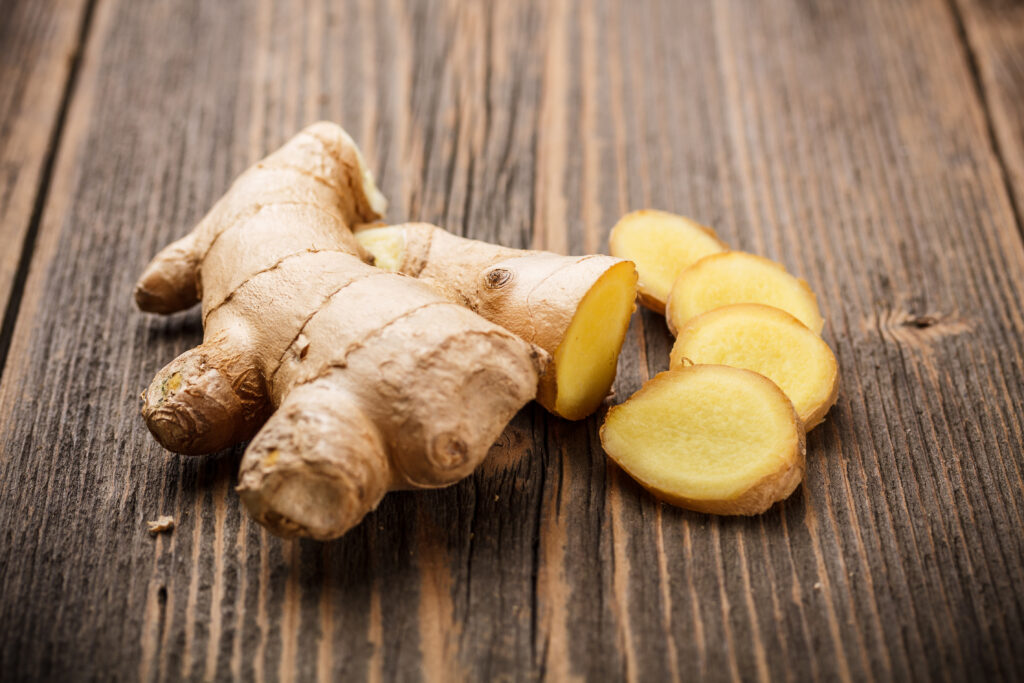
1. Ginger
This spicy wonder was crowned “2023 Herb of the Year” last year by the International Herb Association. And it’s not surprising. Ginger root has a spicy taste that wonderfully compliments both sweet and savory recipes. It has anti-inflammatory and antioxidant properties that help relieve the scratchiness and pain of a sore throat, and can also calm down a cough. In addition, ginger has antibacterial and antiviral properties. In mice models, ginger helped regulate antibody production.
How to use
The most common use of ginger for cold and flu relief is to add it to honey or honey and lemon to make a cough syrup or a syrup for sore throat.
Ginger honey syrup. Grate about 2 inches of ginger root. Strain out the juice and mix the juice with 2 tablespoons of honey. Use it throughout the day, one teaspoon at a time.
Ginger honey lemon tea. Add the ginger honey syrup and lemon juice to warm water to make this refreshing and healing tea.
To make caffeinated tea, bring about 2 cups of water to boil in a saucepan. Crush about 1 inch of ginger root and add it to the water, let it boil for about 3 more minutes. Strain the water into a cup. Add honey and lemon to taste. Put in a teabag of your favorite black tea.
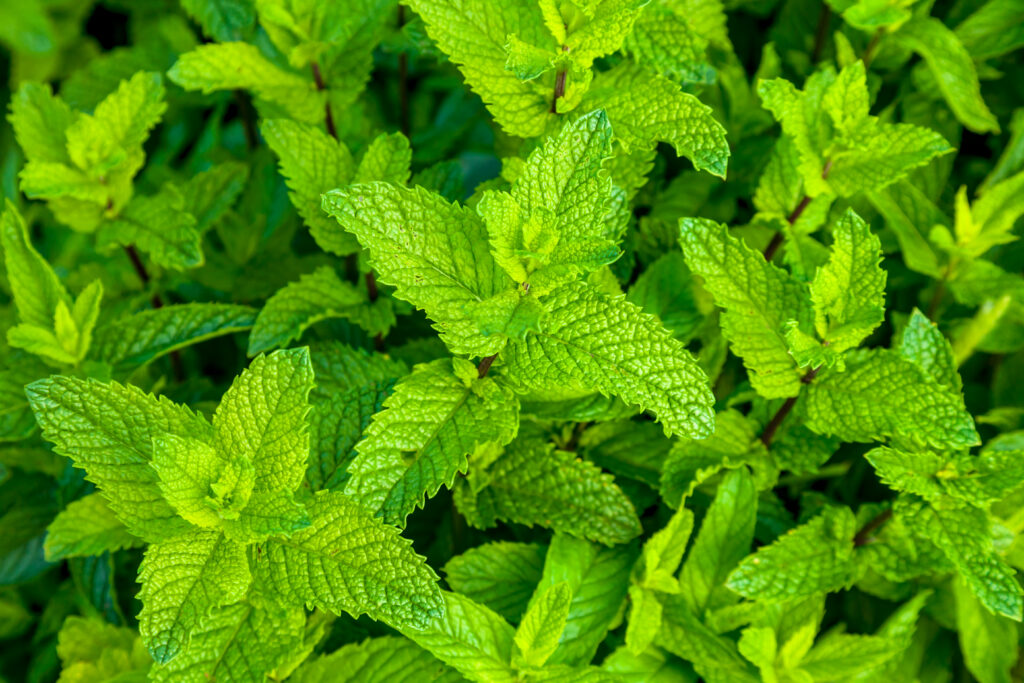
2. Peppermint
This easy-to-grow herb is packed with menthol, a chemical that helps loosen up phlegm and mucus. It helps clear out your nose so you can breathe easier and improves your cough. Peppermint also opens up pores in the body helping you cool down more easily if you have a fever. The fresh taste of the herb improves alertness and reduces nausea.
How to use
Peppermint tea. Bring two cups of water to a boil. Take off the heat and add 4-5 leaves of fresh peppermint. Let steep for 10 minutes to infuse maximum flavor in your tea.
Peppermint steam. Add 5-6 leaves of peppermint leaves into steaming water. Breathe in the steam to help with congestion and cough.
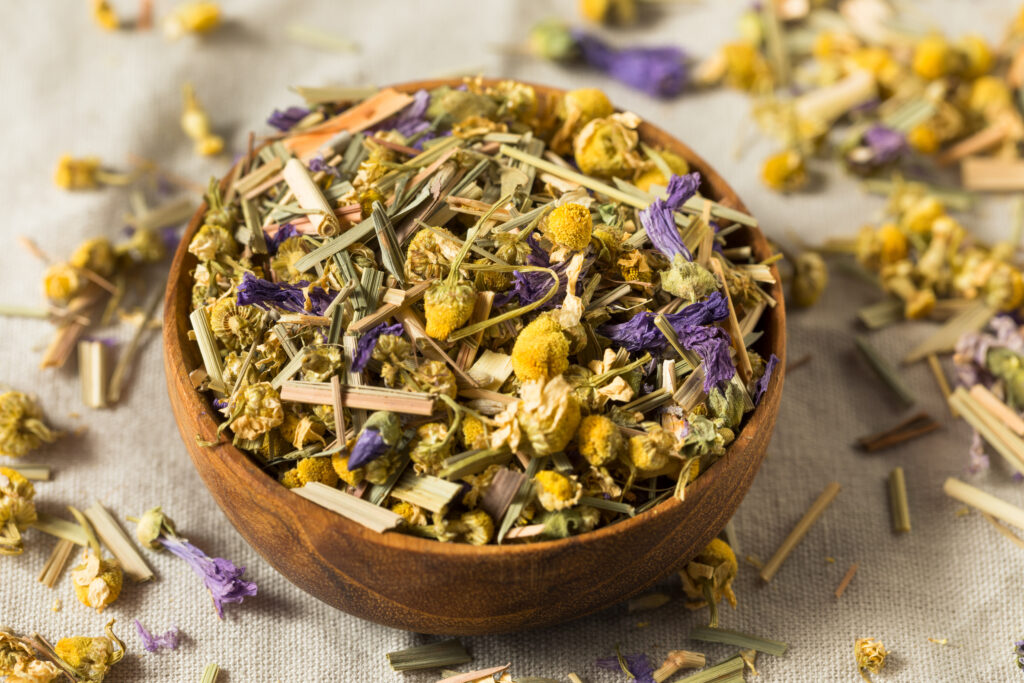
3. Chamomile
Chamomile tea is made from dried chamomile flowers. It has anti-inflammatory properties that help with throat pain. Dried chamomile petals contain flavonoids that have mild tranquilizing properties, helping you sleep better and allowing you to get some much-needed rest.
How to use
Chamomile tea. The chamomile teas available in your grocery store can be used to easily reap the benefits of this herb.
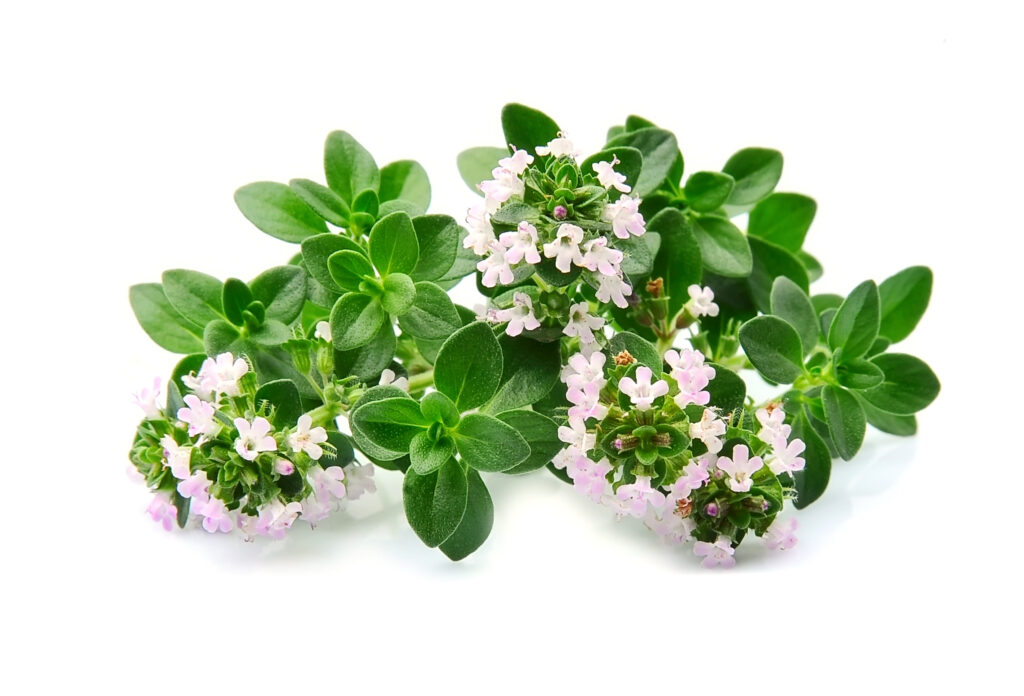
4. Thyme
This savory herb has anti-inflammatory properties that help overall symptoms of congestion, cough, headache, and body aches. The herb has antibacterial and antifungal effects. The leaves are rich in vitamins A and C, and help improve immunity. The minty taste can also help improve appetite and digestion.
How to use
Thyme tea. Bring 2 cups of water to boil. Remove from heat. Add 1 teaspoon of fresh chopped thyme to the water and let steep for 10 minutes. Add honey and lemon to improve taste and effectiveness.
Soups. Add a tablespoon of thyme leaves to your trusty chicken noodle soup or another favorite soup to reap the benefits of this herb.
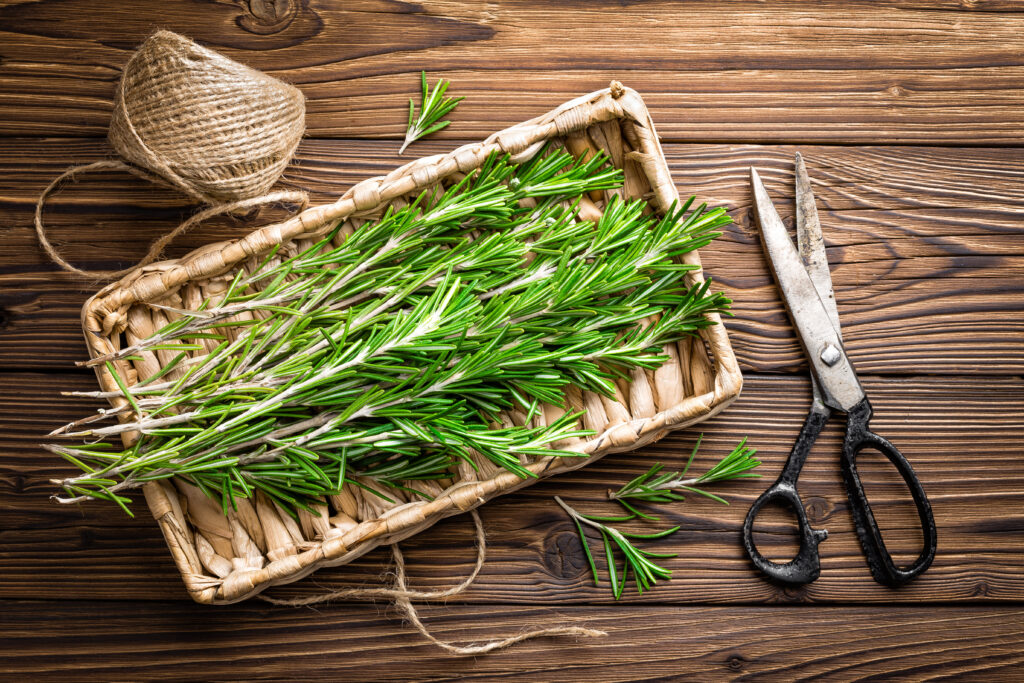
5. Rosemary
This flavorful herb is packed with vitamins A and C. It is known to fight infections due to its antibacterial and antifungal properties. Rosemary also helps with reducing fever-induced chills. Further, the herb is an expectorant that helps with breaking up mucus and improving cough and congestion.
How to use
Rosemary tea. Bring 2 cups of water to boil. Remove from heat. Add 1 teaspoon of fresh rosemary leaves to the water and let steep for 10 minutes.
Rosemary steam. Add 2-3 springs of rosemary into steaming water. Breathe in the steam to help with congestion and inflammation.
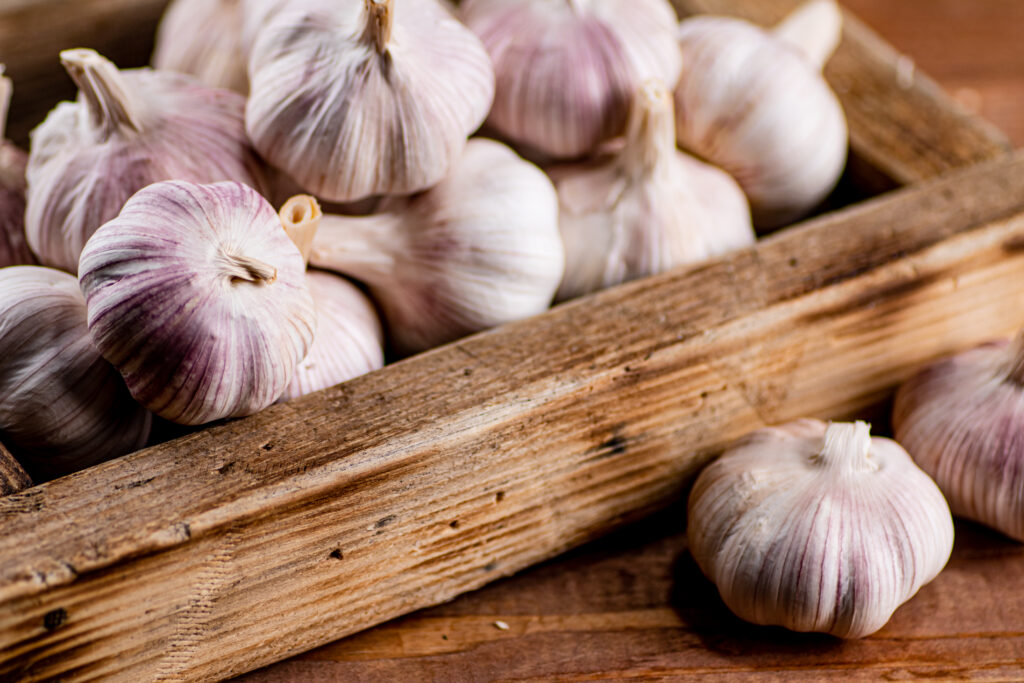
6. Garlic
These savory cloves fight bacterial and viral infections. Consuming garlic helps improve cardiovascular health by helping reduce blood pressure and regulating cholesterol levels. The powerful flavor can make savory recipes taste better and improve your appetite.
Garlic helps reduce fatigue- the extreme exhaustion you feel as your body diverts resources to fight off the infection. Garlic has a high sulfur content. Sulfur improves the absorption of trace elements such as zinc that improve immune function. Aged garlic from garlic extracts has been shown to modify immune cells so they could proliferate better which was shown to reduce the severity of colds and flu.
How to use
Soups and stews. Add garlic to your favorite soups and stews to enjoy its benefits.
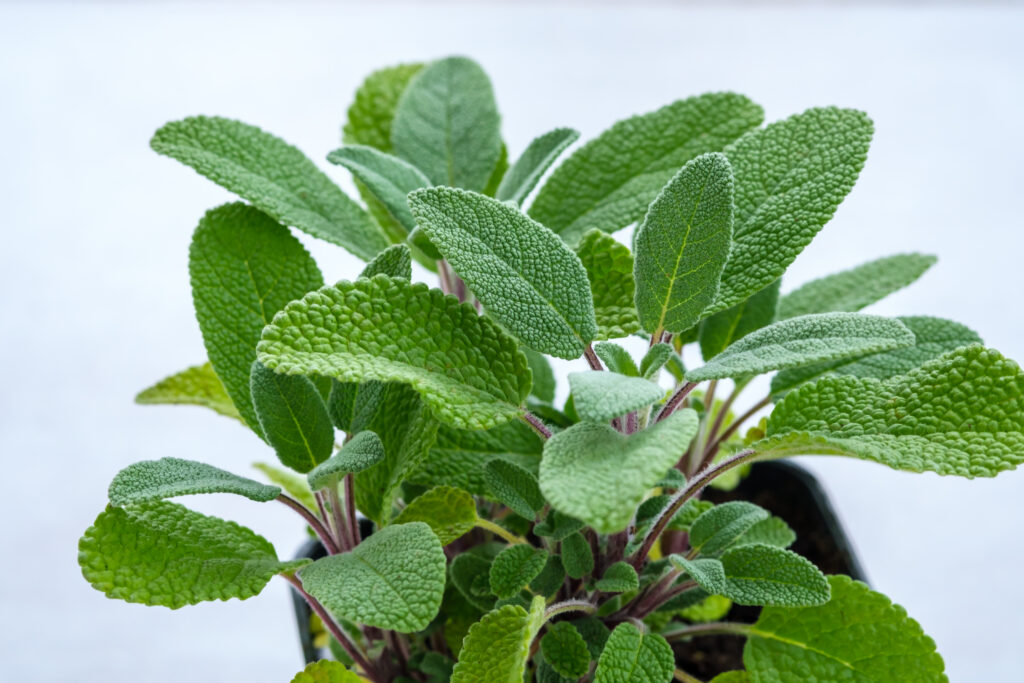
7. Sage
This fragrant herb is a natural antiseptic. It is rich in vitamins A, C, and K, and is understood to enhance memory. The flavorful herb can help sore throats feel better. Combined with rosemary and thyme, sage can be used to help soothe a hurting throat and break mucus improving congestion.
How to use
Sage tea. Bring 2 cups of water to boil and take it off heat. Add 2 fresh sage leaves to the water and let steep for 10 minutes. Add honey and lemon to improve taste and effectiveness.
Soups. Add a few leaves of the herb to your favorite soups and stews. Combine with thyme, rosemary, and garlic for increased effectiveness.

8. Echinacea
Echinacea, also called coneflower, American coneflower, or purple coneflower, is a medicinal plant native to North America. The above-ground parts of the plant can help treat colds and upper respiratory tract infections. The roots can be beneficial when treating infections like the flu. The plant extract has powerful activity against both human and avian influenza viruses (which cause bird flu).
How to use
Over-the-counter echinacea tea, extract, or dietary supplements may help reduce the worst symptoms of cold and flu. However, it is a powerful herb and it is important to be cautious especially when using extracts, and not to exceed the recommended dosage. Echinacea can also cause gastrointestinal distress, so it may not be for everyone.
Precautions
If you are pregnant, nursing, taking supplements or medication, or have pre-existing health conditions, some herbs can cause unwanted side effects or dangerous interactions. The safety of long-term use of many herbs and supplements remains untested.
Recommendations on safe doses can vary as well and are not well-tested. Always check with your physician before using herbal remedies and before using these remedies for infants or children.
The information provided in our blog posts is for informational purposes only and is not intended as a substitute for professional medical advice, diagnosis, or treatment. Always seek the advice of your physician or other qualified health provider with any questions you may have regarding a medical condition. Never disregard professional medical advice or delay in seeking it because of something you have read on this blog.
 What’s prostate cancer
Prev post
What’s prostate cancer
Prev post





